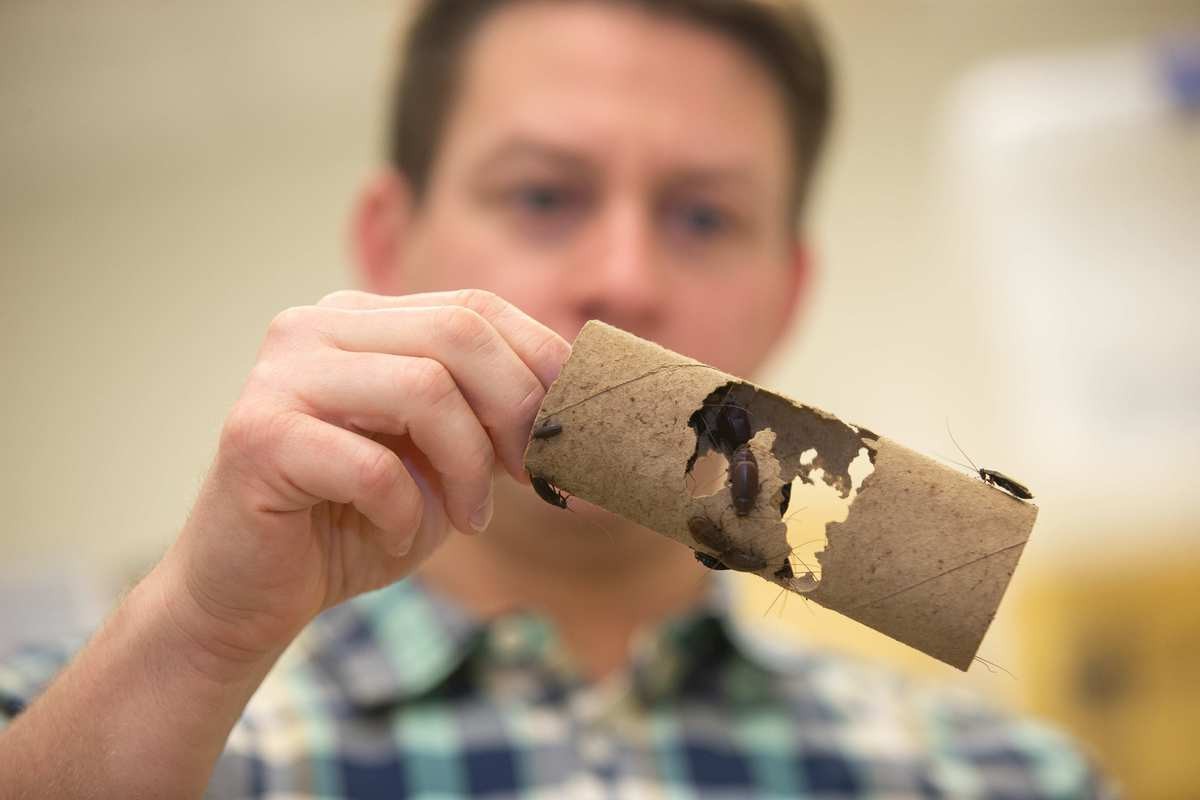
Inside the wild ways many creatures make milk
UC biologist Joshua Benoit tells Smithsonian that some cockroaches make an equivalent
Smithsonian magazine turned to a University of Cincinnati biologist to explain the weird and surprising ways that animals make milk for their young.
UC College of Arts and Sciences Professor Joshua Benoit told Smithsonian that it's not just goats, cows and other mammals that produce fat-rich milk for their babies.

UC Professor Joshua Benoit spoke to Smithsonian about animals other than mammals that produce milk. Photo/Joseph Fuqua/UC
Scientists once thought that milk production was a characteristic exclusive to mammals. The name is derived from the Latin word for “breast.”
But Benoit said scientists are finding that this isn't necessarily the case.
Everything from jumping spiders to penguins to some amphibians produce a milky, protein-rich secretion to feed their young. And while it doesn't share the same evolutionary origin, it has a similar function, Benoit said.
In his biology lab, he has studied insects such as beetle-mimic cockroaches that feed milk to their newborn babies.
“We usually call it a milk-like substance,” he told Smithsonian. “For all intents, it does the same thing, and even some of the proteins present are similar.”
Benoit said tsetse flies along with some ants and spiders, too, secrete a nourishing milk-like substance for their babies. And each species arrived at this survival strategy for raising babies independently, which demonstrates its benefits across the animal kingdom, he said.
Featured image at top: UC Professor Joshua Benoit holds up beetle-mimic cockroaches in his biology lab. Photo/Andrew Higley/UC Marketing + Brand
Related Stories
Smithsonian: UC finds pollution in ancient Maya city
July 2, 2020
Smithsonian Magazine examines research by University of Cincinnati that found toxic pollution in ancient Maya reservoirs.
Haaretz: UC study sheds light on environmental collapse
June 29, 2020
Haaretz and other international media report on UC's research into ancient Maya water pollution.
Cincinnati Edition: Did ancient Maya build parks?
July 20, 2021
UC biology professor David Lentz talks to Cincinnati Edition about their multi-disciplinary investigation of plants that grew along ancient Maya reservoirs more than 1,000 years ago.
